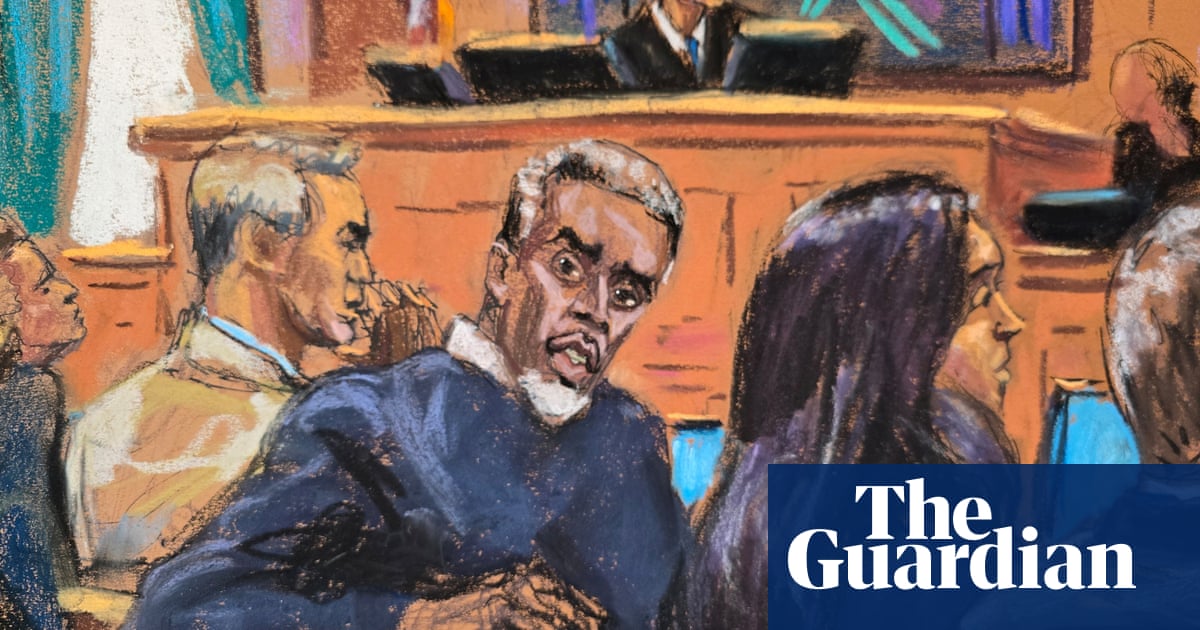The federal sex trafficking trial of Sean “Diddy” Combs, the hip-hop entrepreneur whose wildly successful career has been dotted by allegations of violence, began on Monday inNew YorkCity with jury selection that could last several days.
Opening statements by lawyers and the start of testimony are expected next week.
Several dozen prospective jurors got a brief description of the sex trafficking and racketeering conspiracy charges against Combs from the judge, Arun Subramanian, who reminded them that Combs had pleaded not guilty and was presumed innocent.
As the judge spoke, Combs sat with his lawyers. He wore a sweater over a white collared shirt and gray slacks, which the judge had allowed rather than jail clothing. Combs, 55, has been held in a grim federal lockup in Brooklyn since his arrest last September. His hair and goatee were almost fully gray because dye isn’t allowed in jail.
Unlike other recent high-profile celebrity trials, Combs’s court case won’t be broadcast live because federal courtrooms don’t allow electronic recordings inside – meaning courtroom sketch artists serve as the public’s eyes in the courtroom.
The trial is expected to take at least eight weeks. If convicted, he faces the possibility of decades in prison.
Several prospective jurors indicated they had seen news reports featuring a key piece of evidence in the case: a video of the hip-hop mogul hitting and kicking one of his accusers in a Los Angeles hotel hallway in 2016. One prospective juror described a still image she saw from the video as “damning evidence”. That woman was rejected from consideration.
After another juror was dismissed, Combs asked for a bathroom break, telling the judge: “I’m sorry your honor, I’m a little nervous today.”
The 17-page indictment against Combs – which reads like a charging document filed against a Mafia leader or the head of a drug gang – alleges that Combs engaged in a two-decade pattern of abusive behavior against women and others, with the help of people in his entourage and employees from his network of businesses.
Combs and his lawyers say he’s innocent and any group sex was consensual. They say there was no effort to coerce people into things they didn’t want to do, and nothing that happened amounted to a criminal racket.
Prosecutors say women were manipulated into drug-fueled sexual performances with male sex workers that Combs called “freak offs”. To keep women in line, prosecutors say Combs used a mix of influence and violence: he offered to boost their entertainment careers if they did what he asked – or cut them off if they didn’t.
And when he wasn’t getting what he wanted, the indictment says Combs and his associates resorted to violent acts including beatings, kidnapping and arson. Once, the indictment alleges, he even dangled someone from a balcony.
Combshas acknowledgedone episode of violence that is likely to be featured in the trial. In 2016,a security camera recorded himbeating up his former girlfriend, the R&B singer Cassie, in the hallway of a Los Angeles hotel. Cassiefiled a lawsuitin late 2023 saying Combs had subjected her to years of abuse, including beatings and rape.
The Associated Press does not typically name people who say they have been sexually abused unless they come forward publicly, as Cassie, whose legal name is Casandra Ventura, did.
The trial is the most serious in a long string of legal problems for Combs.
In 1999, he was charged with bursting into the offices of an Interscope Records executive with his bodyguards and beating him with a champagne bottle and a chair. The executive, Steve Stoute, later asked prosecutors to go easy on Combs, who pleaded guilty to a lesser charge and took an anger management class.
Later that same year, Combs was stopped by police after he and his then girlfriend, Jennifer Lopez, fled a nightclub where three people were wounded by gunfire. Combs was acquitted of all charges related to the episode at a 2001 trial, but a rapper in his entourage, Jamal “Shyne” Barrow, was convicted in the shooting and served nearly nine years in prison.
Then in 2015, Combs was charged with assaulting someone with a weight-room kettlebell at the University of California, Los Angeles, where one of his sons played football. Combs said he was defending himself and prosecutors dropped the case.
